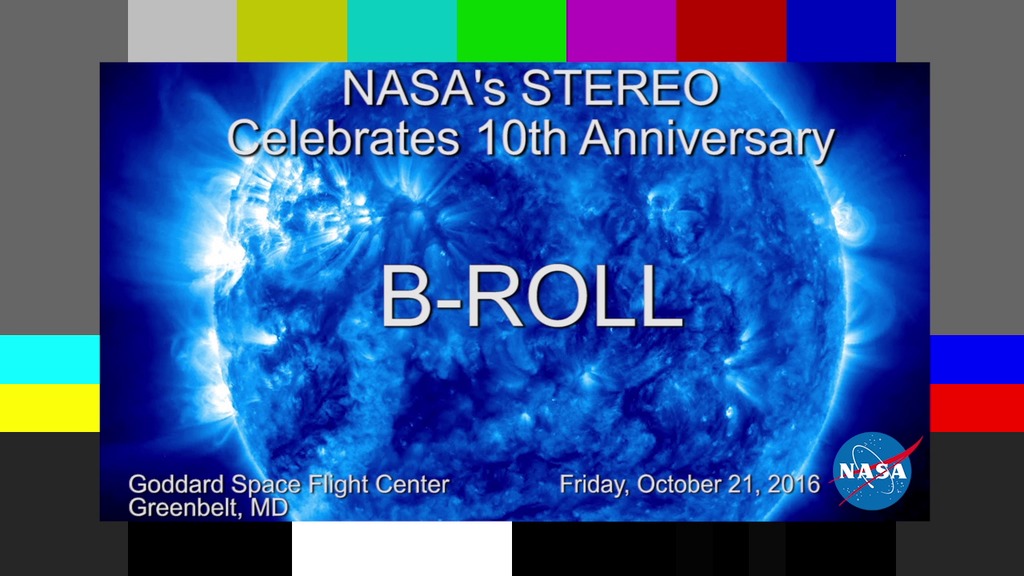CMEs Galore
On April 20, 2013, at 2:54 a.m. EDT, the sun erupted with a coronal mass ejection (CME), a solar phenomenon that can send billions of tons of solar particles into space that can affect electronic systems in satellites. Experimental NASA research models show that the CME left the sun at 500 miles per second and is not Earth-directed. However, it may pass by NASA's Messenger and STEREO-A satellites, and their mission operators have been notified. There is, however, no particle radiation associated with this event, which is what would normally concern operators of interplanetary spacecraft since the particles can trip computer electronics on board. When warranted, NASA operators can put spacecraft into safe mode to protect the instruments from the solar material.
The same region of the sun erupted with another coronal mass ejection (CME) at 3:54 a.m. on April 21, 2013. Experimental NASA research models show the CME left the sun at speeds of 550 miles per second. The models show that the CME will also pass by NASA's Messenger and the flank of the CME may graze STEREO-A.
Another coronal mass ejection (CME) has erupted from the sun, headed toward Mercury and NASA's Messenger spacecraft. The CME began at 12:39 p.m. EDT on April 21, 2013. Experimental NASA research models show that the CME left the sun at 625 miles per second and that it will catch up to the CME from earlier on April 21 before the combined CMEs pass Messenger. There is also chance that the combined CMEs will give a glancing blow to STEREO-A.
Coronal mass ejections were popping out from the Sun at a pace of two per day on average (Apr. 18-23, 2013). We counted ten CMEs for the five days, but some of the eruptions were complex and difficult to differentiate from one another. Almost all of them blew particles out to the left, most of them probably originating from the same active region. These were taken by the STEREO (Ahead) spacecraft's coronagraph, in which the black disk blocks the Sun (represented by the white circle) so that we can observe the fainter features beyond it. Credit: NASA/STEREO
April 25 CME from SOHO Cor2 as an animated Gif (labeled MPEG below) and Jpeg still.
Credit: ESA&NASA/SOHO

The third coronal mass ejection (CME) in two days erupted off the sun in the direction of Mercury on April 21, 2013, at 12:39 p.m. EDT. This image of the CME, shown shooting off the right side of the image, was capture by the joint ESA and NASA Solar Heliospheric Observatory (SOHO). The sun is blocked in this image so its brightness doesn't obscure the solar atmosphere, the corona.
Credit: ESA&NASA/SOHO

The third coronal mass ejection (CME) in two days erupted off the sun in the direction of Mercury on April 21, 2013, at 12:39 p.m. EDT. This image of the CME, shown shooting off the right side of the image, was capture by the joint ESA and NASA Solar Heliospheric Observatory (SOHO). The sun is blocked in this image so its brightness doesn't obscure the solar atmosphere, the corona.
Credit: ESA&NASA/SOHO

The third coronal mass ejection (CME) in two days erupted off the sun in the direction of Mercury on April 21, 2013, at 12:39 p.m. EDT. This image of the CME, shown shooting off the right side of the image, was capture by the joint ESA and NASA Solar Heliospheric Observatory (SOHO). The sun is blocked in this image so its brightness doesn't obscure the solar atmosphere, the corona.
Credit: ESA&NASA/SOHO

The third coronal mass ejection (CME) in two days erupted off the sun in the direction of Mercury on April 21, 2013, at 12:39 p.m. EDT. This image of the CME, shown shooting off the right side of the image, was capture by the joint ESA and NASA Solar Heliospheric Observatory (SOHO). The sun is blocked in this image so its brightness doesn't obscure the solar atmosphere, the corona.
Credit: ESA&NASA/SOHO

The third coronal mass ejection (CME) in two days erupted off the sun in the direction of Mercury on April 21, 2013, at 12:39 p.m. EDT. This image of the CME, shown shooting off the right side of the image, was capture by the joint ESA and NASA Solar Heliospheric Observatory (SOHO). The sun is blocked in this image so its brightness doesn't obscure the solar atmosphere, the corona.
Credit: ESA&NASA/SOHO

This image of a coronal mass ejection (CME) was captured at 7:30 a.m. EDT on April 20, 2013. The CME is headed in the direction of Mercury. The large bright spot on the left is Venus.
Credit: ESA&NASA/SOHO

This image of a coronal mass ejection (CME) was captured at 7:30 a.m. EDT on April 20, 2013. The CME is headed in the direction of Mercury. The large bright spot on the left is Venus.
Credit: ESA&NASA/SOHO

CME on April 20, 2013 captured by the SOHO spacecraft's LASCO C2 instrument.
Credit: ESA&NASA/SOHO

CME on April 20, 2013 captured by the SOHO spacecraft's LASCO C2 instrument.
Credit: ESA&NASA/SOHO
For More Information
Credits
Please give credit for this item to:
NASA's Goddard Space Flight Center. However, individual images should be credited as indicated above.
-
Video editors
- Steele Hill (Wyle Information Systems)
- Genna Duberstein (USRA)
-
Producer
- Scott Wiessinger (USRA)
-
Writer
- Karen Fox (ADNET Systems, Inc.)
Series
This page can be found in the following series:Tapes
The media on this page originally appeared on the following tapes:-
2013 Heliophysics Breaking News
(ID: 2013021)
Tuesday, December 31, 2013 at 5:00AM
Produced by - Robert Crippen (NASA)
Release date
This page was originally published on Friday, April 26, 2013.
This page was last updated on Wednesday, May 3, 2023 at 1:52 PM EDT.
